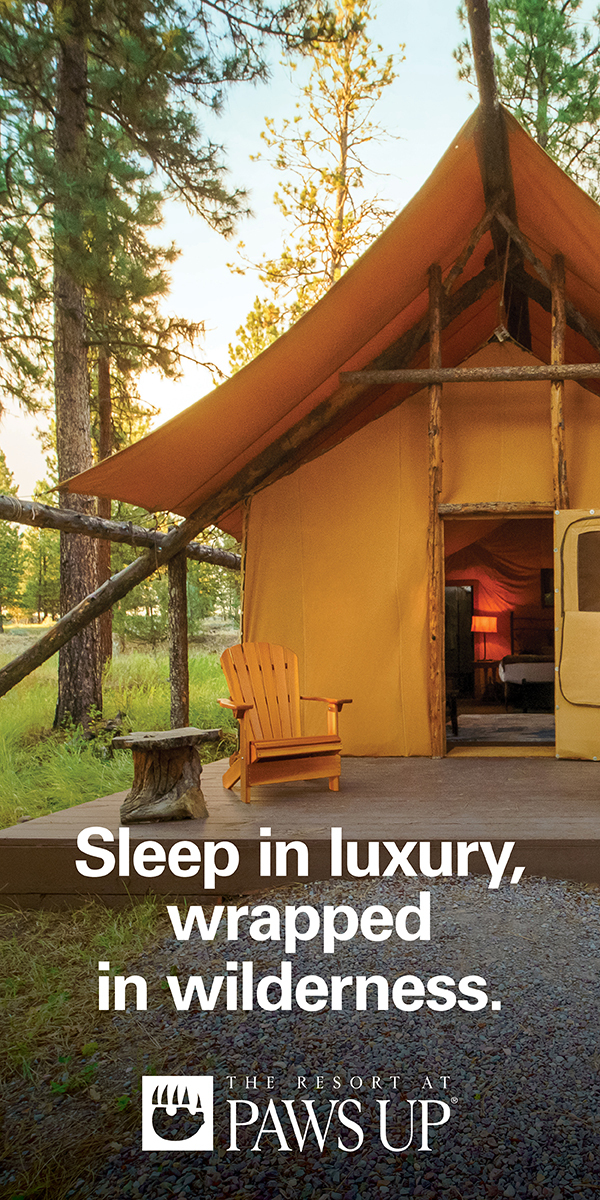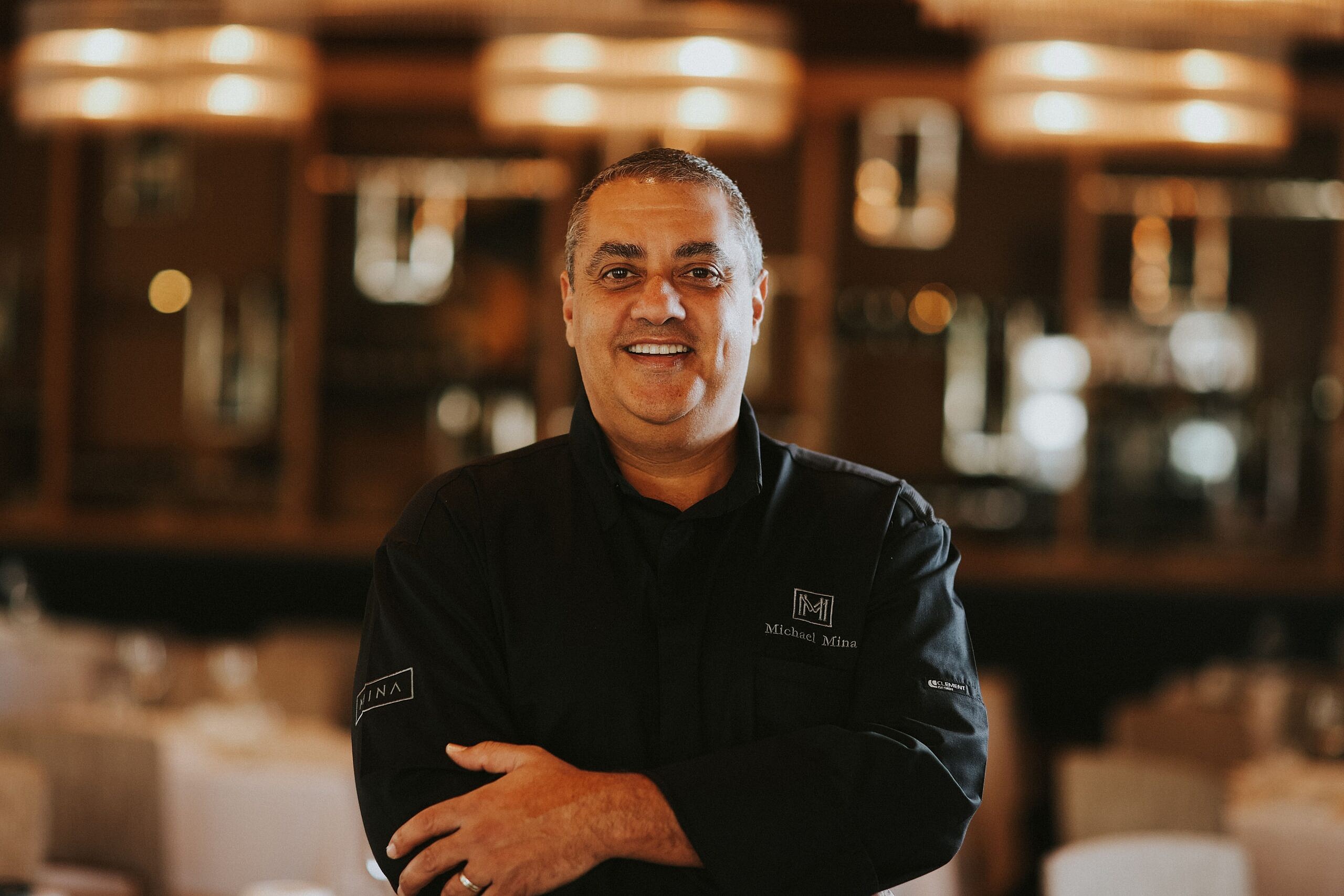
Sitting in the world-famous Bellagio in Las Vegas, you can be taken aback by the beauty and majesty that is in front of you. The Bellagio has everything you can imagine. Including the amazing man that was sitting in front of us for this interview, Chef Michael Mina. With the warmest grin and softest chuckle, Chef Michael shattered any preconceived notion we might have had about a red face chef yelling during a Saturday night rush.
Michael Mina is the quintessential picture of the American dream. Starting as a fourteen-year-old dishwasher in a kitchen, he rose through the ranks to now operating forty-five restaurants globally. Not to mention his Michelin-starred flagship restaurant in San Francisco. Talking with him, you would never guess all of his accolades and accomplishments.
Mina has been honored many times for his culinary art, including James Beard Foundation Awards and multiple Michelin stars. Also in 2013, he was inducted into the Who’s Who of Food & Beverage in America. He was named Gayot Best Restaurateur in the U.S. in 2011, and Bon Appétit Chef of the Year in 2005. He has made meals for three American presidents. Cooking for two in one week (George W. Bush and Bill Clinton). Also, most memorably made lunch for then-President Barack Obama.
Chef Michael talks candidly about his upbringing and how that shaped his culinary perspectives. He gives us exclusive backstories into how some of his most famous dishes were created and even tells us the secrets of butter poaching. So, sit back, grab a nice Cabernet for this medium rare conversation with the one and only Michael Mina.
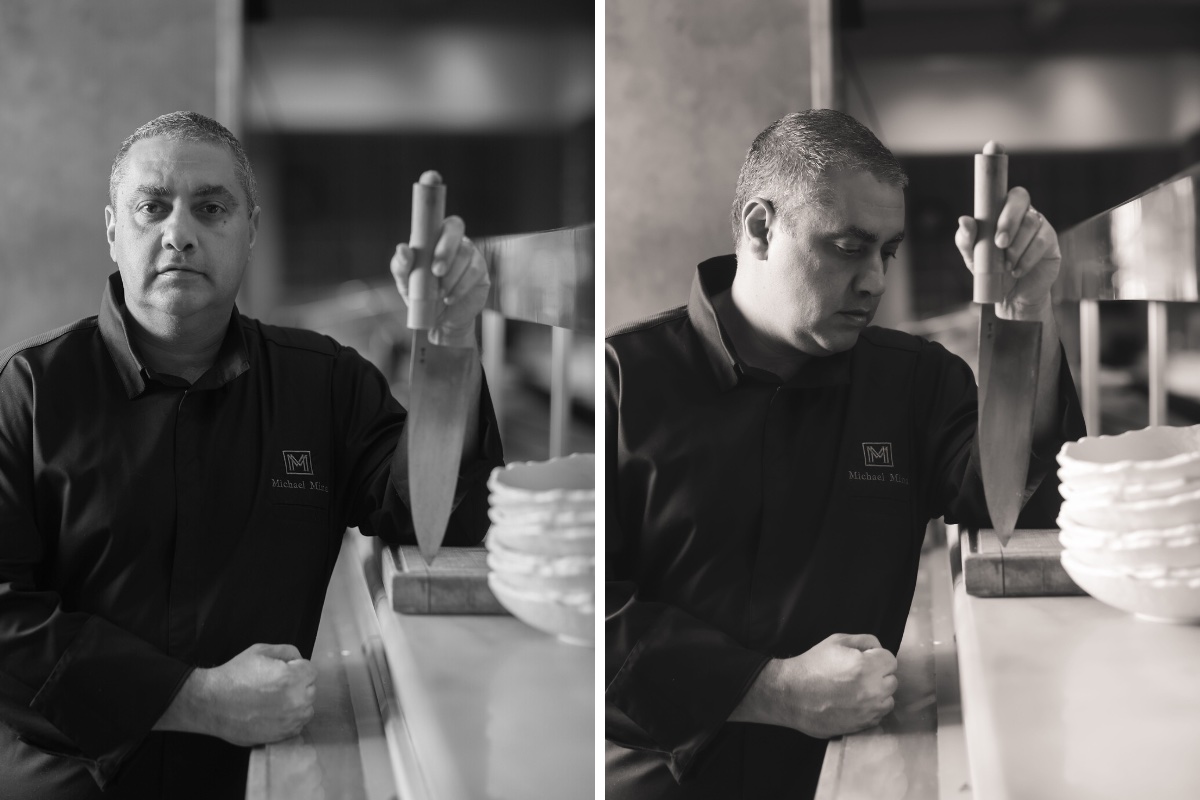
Share with us the story behind your culinary journey and how you’ve developed your passion for cooking?
Michael Mina:
I started cooking when I was fourteen. Like many chefs, I started as a dishwasher. By that time, you know, I had spent a month in the kitchen. I was pushing my way up to trying to cook with the guys that were cooking. It was great because by the time I was 15 I knew that’s what I wanted to do for the rest of my life.
Being from an immigrant family from Egypt, this wasn’t a popular decision, to say the least. I was nervous to tell my parents that I wanted to miss college and go to culinary school. But I did it and, you know, went to culinary school right out of high school. I went to the Culinary Institute of America, and that’s how it all started.
What would you say drives your creativity and inspires you to continually push your boundaries?
First of all, I consider myself so blessed in so many ways because I get to create instant gratification and very few people get to experience that in their careers. When you cook for somebody you get to watch their expressions. It is so amazing to be able to do that for people.
The biggest question in our industry is how are you gonna stay relevant every decade? You know? You have to constantly be pushing yourself, constantly surrounding yourself with a lot of talented people. Because that’ll really push you if you’re surrounded by talent, the inspiration comes easy.
You can never stop being a student of the game. The greatest thing about our industry is that you could do it for the rest of your life and then some, and I guarantee you, you’re not gonna learn all that you can. You can just go to another country and you’ll learn so many things you didn’t know about food and cooking.
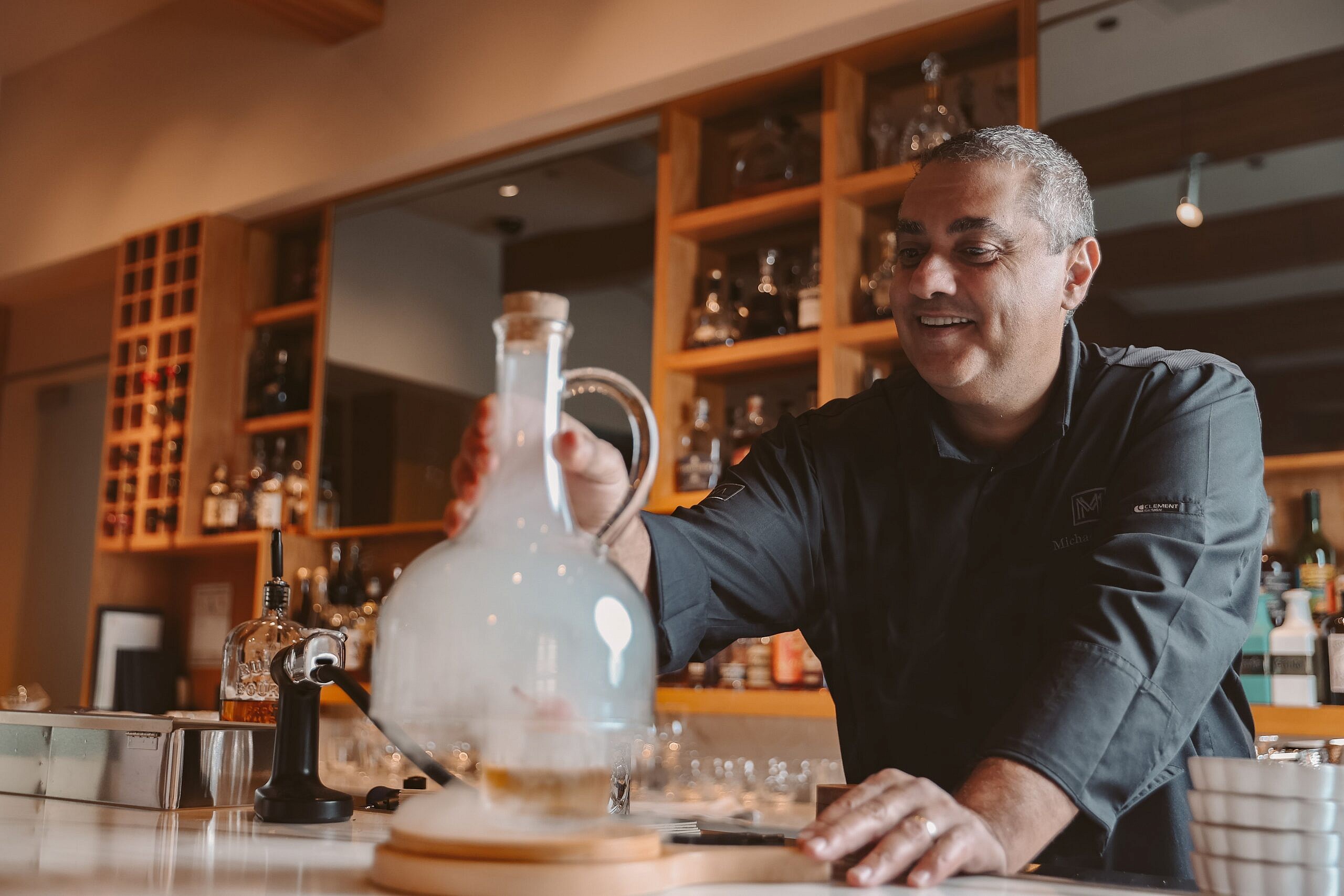
How do you approach the creation of a new dish or a new menu?
Creating a dish or conceptualizing a dish, it always starts with seasonality. So that’s what’s going to always inspire me first. It’s just like what you’re gonna wear, right? It’s like your wardrobe, if it’s summertime your wardrobe changes. Same when it comes to cooking, because what you’re gonna get throughout the year is gonna continually change. It pushes you to keep working on your dishes, keep refreshing your dishes.
Well, it starts there and then you really develop your own style. And so you want to kind of stay within your style. My style has always been bold, big flavors. I always think about balance because for me, acid, sweet spice and fat, those are the anchors of the dish.
And then from there you start saying, what’s gonna give that dish acidity? What’s gonna give it sweetness? What’s gonna give it spice? And what’s gonna give it the richness? And how are those flavors gonna come together? And then you really dive into what’s gonna be the fun cooking technique, what’s the twist to that?
What would you consider your top five signature dishes? Are there any cool stories about how they came to be?
Ahi tuna tartar, the caviar parfait, the lobster pot pie, the miso glaze bass, and the potato crusted snapper.Those are just a handful of ’em.
Probably one of my favorite stories is how the caviar parfait came to be. So that was one that I did for Diane, my wife, on our honeymoon. And she was asking for caviar every day while we were in Hawaii and I kept telling her we couldn’t get it. We couldn’t get it because I was wanting to surprise her with breakfast in bed. So I got some caviar from one of my chef friends at a restaurant. And then, I didn’t want it to be a big project to eat it. So I kind of said, okay, I’m gonna make it like a parfait. Then the caviar parfait was born.
I layered everything you have with caviar. Smoked salmon, the crumb, fresh eggs, the potato cake, and the caviar made like a little cake out of it, a little parfait. 27 years later, it won’t leave any of the menus. It’s absolutely incredible.
Also the Lobster pot pie is another fun story. My wife is Italian and Puerto Rican. So she loves to throw a big party as well. On Sundays we’d always have a lot of the staff over to the house and have parties. Also it’s a football day, so you have to balance how much you really want to cook, right?
We had everyone coming over, and my wife wanted to do some sort of lobster boil. All I could envision was me and like two other people are gonna know how to crack these and we’re gonna be cracking lobsters for everybody all day long.
So, I took a giant roasting pan and made it at work the night before. Blanched all the lobsters, made the pot pie base and wrapped the whole thing. The whole roasting pan in the pie dough and baked the whole thing and just put it out for everybody. The first one fed like 20 people.
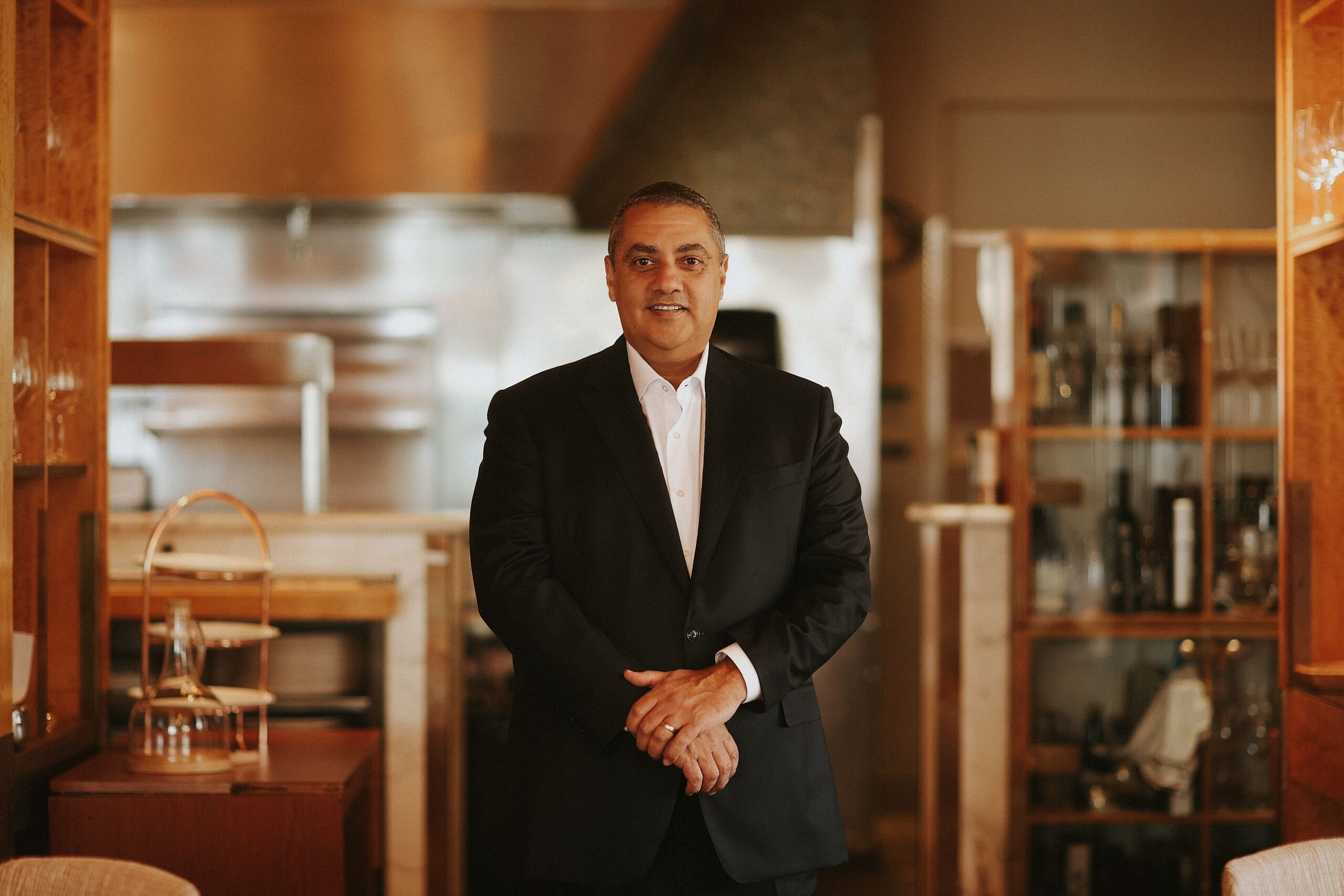
How do you make sure every flavor and presentation meets the high standards that are set in place?
I think in anything it has a lot to do with being relentless in a positive way because you know, you’re not gonna do everything yourself. That’s impossible. It’s just not intelligent in all honesty because if you’re surrounded by people that are continually pushing you, continually growing around you, what’s gonna happen is inevitably you’re gonna be able to say, okay, these are our standards.
And I think that so many times people get caught up in, “these are my standards”, but they’ve gotta be our standards. Because If there are standards, what’s gonna end up happening is, Once the people around you have those same standards, then it just clicks right into place.
It’s like a little pyramid, right? Two people know it, then six people know it, then twelve people know it, then twenty four people know it. That’s the only way to keep the standards, right? If you are not able to infuse your standards into the people that are really representing you, then you are never gonna keep your standards. So for me that’s the constant part about being relentless.
What goes through your process when you’re selecting a new location?
Selecting a new location is very intense, especially in this day and age. And so luckily I have, again, all the right people around me. I have a really great CEO and a person that’s the head of development. So what will happen is we’ll really target certain cities that we wanna be in, and then when we start to narrow down to locations.
And then obviously opportunities come up, whether it’s a lease restaurant or a partnership.You know, like where we’re sitting now, Bellagio, right? This is just, you know, one of those dream phone calls that you get. Sign me up, I’m ready to go. Right? But then there’s the due diligence that you have to do on other locations.
I opened a place on Mission Street in San Francisco, and you know, it was probably two years too early. In the sense of being ahead of the trend. But if you look at it, you know it’s a year, year and a half away, then you just have to be strategic about it.
So you want the right clientele, you want the right staff. And again, you have to be able to get the product there. And that’s getting easier everywhere now.
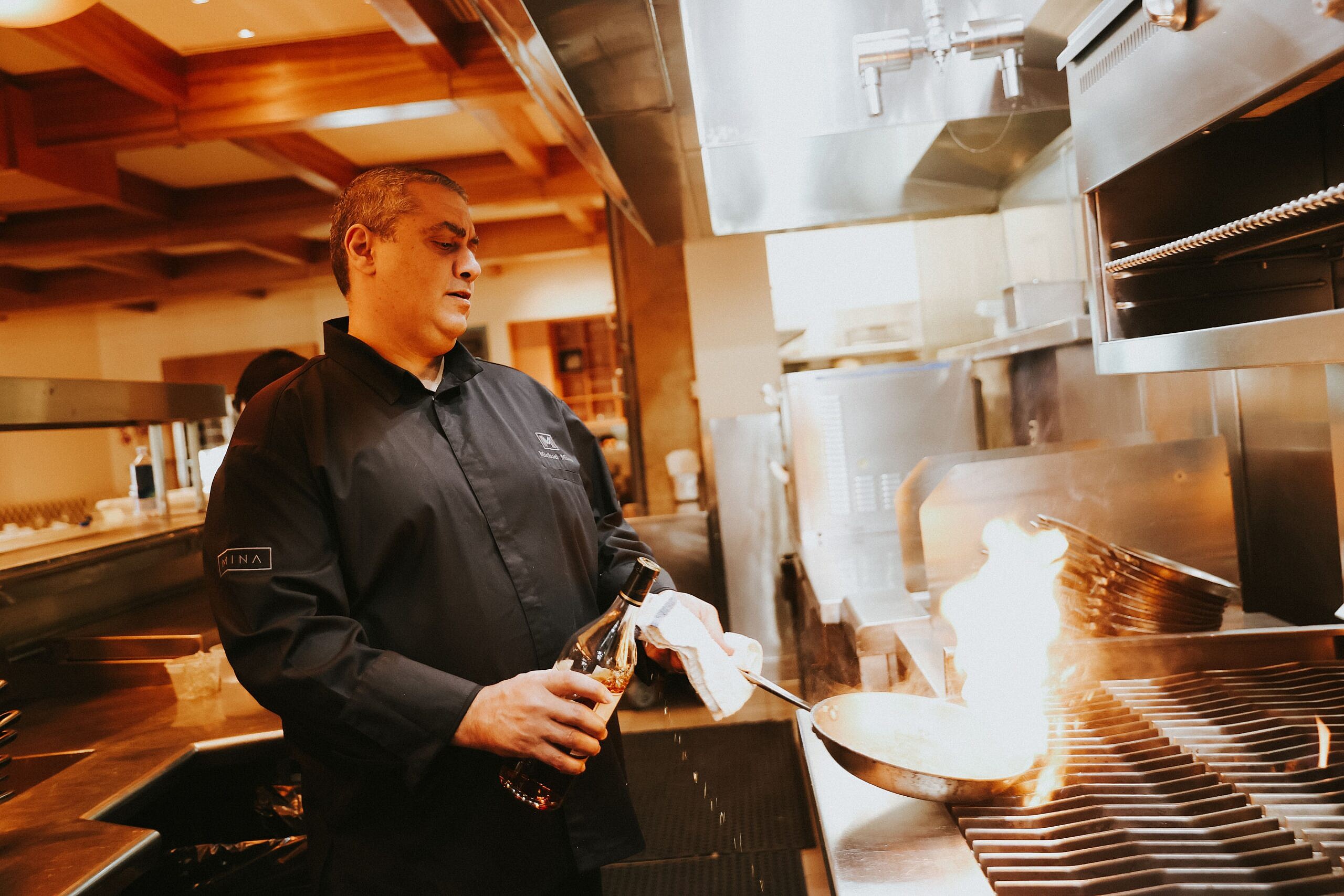
What location is opening next?
Orla restaurant, It will be in Santa Monica. It’s gonna be an amazing product. Everyone knows where the location is. I’m gonna do a restaurant there that’s a Mediterranean restaurant, but is really the heart and soul of my upbringing. So Greek and Egyptian.
That combination of Middle Eastern and Greek is really showcasing a lot of what I grew up eating. I’m over the moon about it. Obviously with all of the great seafood that’s there and all the great products that’s there.
What would you say is a dish you would suggest that all men should master?
Steak. The perfect steak. The real quest is to figure out what is the best way to cook a steak. Some of the things that people have to think about are different cuts. You can cook them in different ways. But if you are just cooking a steak like we do in a restaurant, learn how to butter poach a steak and then grill it the way we do it.
What is butter poaching?
So what we do at all the steakhouses is it’s kind of the reverse psychology of what people normally think. Like you’re gonna throw a raw piece of meat onto a really hot grill. Well that’s gonna take X amount of time and it’s going to release liquid the whole time, right? So we reverse it.
So we have a butter bath with clarified butter in it and herbs and everything else. And we don’t bring that butter bath over 120, 130 degrees. So we slowly poach the steaks in the butter, but you can strain the butter afterwards, okay? And throw the butter in the freezer so you can reuse it.
So the steak stays completely submerged. And so you cook it just under rare in the butter and never let it release its liquid. Then you throw it on the grill. You bring it up to it as soon as it really starts cooking a little bit, and then it takes about 30 minutes, 40 minutes for a normal filet, and then you can sear it in a pan, you can grill it on a really hot grill.
Get a nice sear on it, and you’re gonna have the most tender, delicious piece of steak you’ve ever had. If you wanna do it in an inexpensive way, you can get what’s called like through Williams Sonoma or anything. You can get what’s called a chocolate melter. That’s what pastry chefs use for chocolate. It’s a little machine and it can hold the temperature for you. Perfect. So you can just put your butter in there, put your steaks in there, clean it out, and use it the next time.
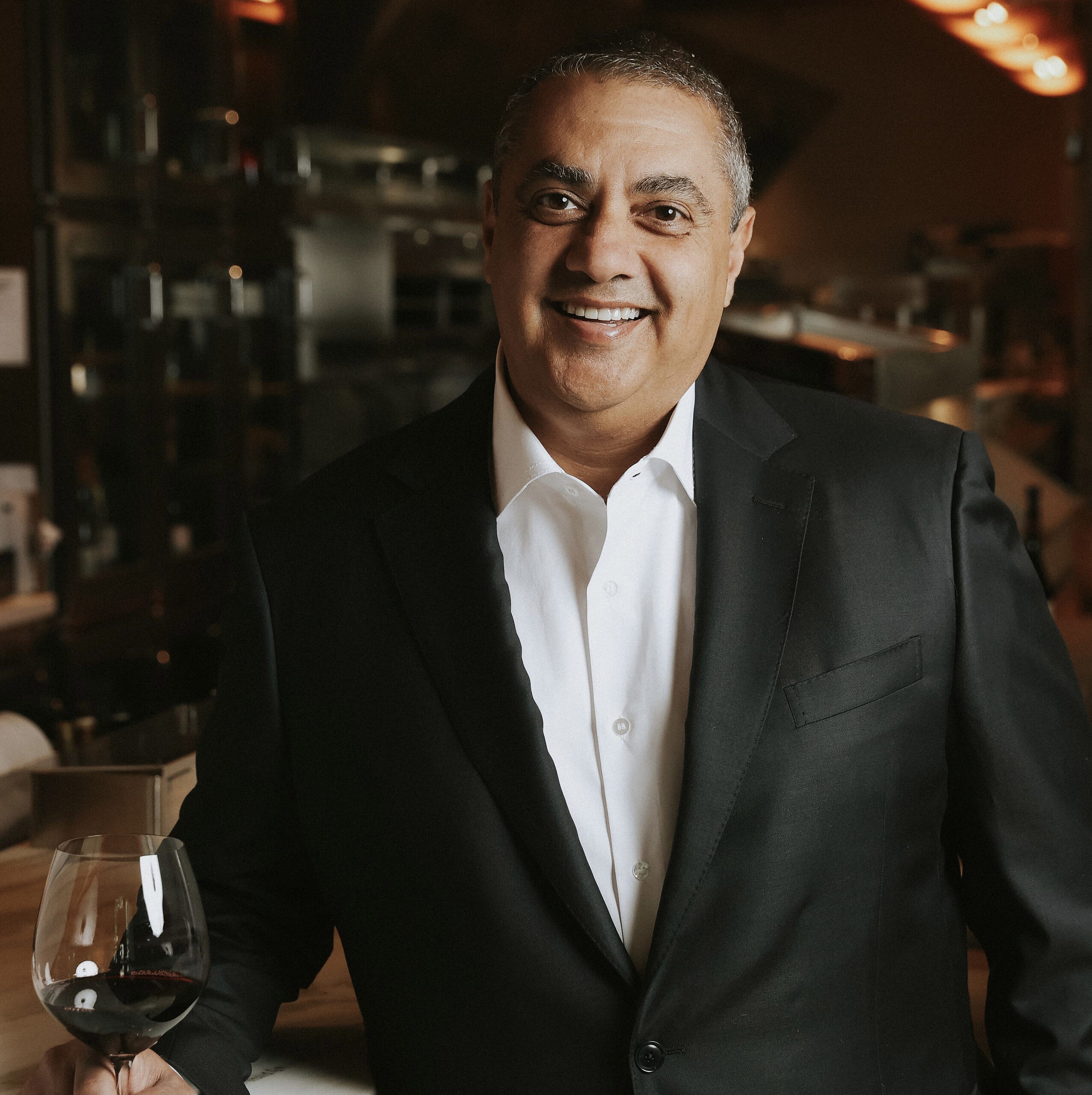
Were there any moments in your early childhood or early career that influenced your cooking today?
Being in a Middle Eastern household, my mom had seven brothers and sisters that all lived around us. So, every weekend there were 30 people in the houses and the tables were always filled with food. And that’s just kind of the way that it happens in Middle Eastern culture. Everything happens around the table. Everyone’s sitting around the table, everybody’s eating. Those were my fondest memories. I don’t know if that necessarily drove me to cooking, but as I started cooking, I started understanding it. I started understanding the whole hospitality piece and why food was so special and why every country has a different way of cooking, but a different way of eating as well.
When you’re not cooking and you’re enjoying food as a diner, you have a favorite cuisine to enjoy?
It’s Japanese. Hands down. I can eat Japanese food four times a week. I am just obsessed with it because it’s so much about product, technique, and balance. When you’re eating from a great Japanese chef, it is just an obsession over everything.
What would you want your legacy to be and where do you see yourself in the next five to ten years?
I’m a person that believes very differently in legacy. I see legacy as a platform. I want to create a place where everyone around me can learn from it, but they can also do their own thing within it. I think what we’ve tried to do throughout the company is to see these chefs that go on to do great things or do great things in our company. That’s rewarding. But I don’t look at it as I’m their mentor. I don’t believe in that. I believe in the fact we all did this together, and whether it was back in ‘91 or whether it’s today, the people that are working today, we’re all doing it together, you know.
Interview: Doug McLaughlin
Photography: Andre Niesing
Grooming: Leila VonSleichter
